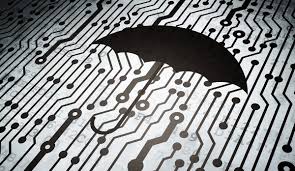 Part 1 of 2
Part 1 of 2
Is lying part of our fundamental human nature?
While we often like to think of lying as some sort of aberration from normal human behavior, the truth may be much less pleasant. An increasing number of studies are illustrating that lies and deception are not only ubiquitous in our everyday behavior but also serve a fundamental role in human development.
In a landmark study, Dr. Bella DePaulo, a social psychologist with the University of California, Santa Barbara, tracked the frequency with which participants lied during their day to day activities. While most of the deceptions were minor, she found that the average person lies one or two times daily!
When similar experiments are conducted across cultures, the results continue to support DePaulo’s finding of frequent deception.
The ubiquity of deception is not surprising, because lies are a natural part of children’s brain development. Dr. Kang Lee, from the University of Toronto, attempted to analyze the frequency with which toddlers are inclined to lie. While asking children to guess the identity of a hidden toy, Dr. Lee and his researchers regularly left the room, telling children not to peak at the toy. When asked if they had looked at the hidden toy, Dr. Lee found that a majority of children lied, and almost all of them did peak!
Perhaps surprisingly, the percentage of children who lied increased with age, from 30 percent of two-year olds, to 80 percent of eight-year olds. They also got better at it, learning to control their tones or even deliberately giving the wrong answer.
Similarly, lying requires some understanding of other people’s minds, so as we get older, we advance in competency. In order to lie, we must be able to deduce the knowledge and beliefs of other people, stepping into their shoes, so to speak. For example, children performed better on tests of executive function and ability to read other people, the more proficient they were at deception.
Many academics have sought deeper explanation for this troubling behavior. If deceit is closely related to normal brain development, then why did this pattern of brain development arise in the first place?
For example, Dr. Sissela Bok, of Harvard University, connects lying with evolutionary advantage. She contends that deception is rooted in efforts to gain competitive advantage by manipulating other humans: “It’s much easier to lie in order to get somebody’s money or wealth than to hit them over the head or rob a bank.”
While some of our everyday lies are based in pathology or malice, most are, in fact, told out of pure self-interest, with motives such as concealing mistakes or gaining personal and financial advantages.
Despite the prevalence of deception, most people assume that others are telling the truth. By accepting that we will sometimes be lied to, we can develop trust that is generally more advantageous than rampant cynicism.
However, people do lie all the time, and we are terrible at identifying these lies. That’s why some psychologists, like those at Humintell, work to better understand how people give themselves away with subtle expressions.
For more information on how to detect deception, check out our training tools here and our past blog post.

 How do our brains recognize faces?
How do our brains recognize faces?